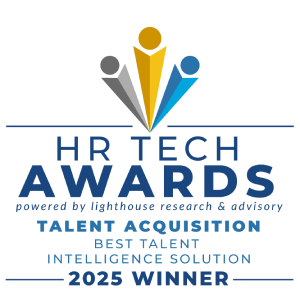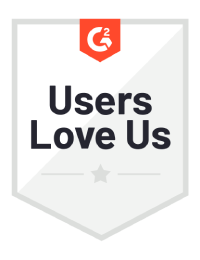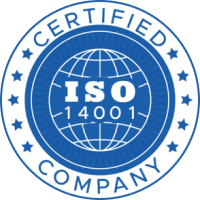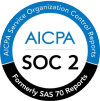From SEO to GEO/AEO – Why Recruiting Must Adapt
Recruiting has always relied on being discoverable. For years, search engine optimization (SEO) and Google for Jobs ensured that career sites, job postings, and employer brand content could be surfaced in front of the right candidates.
But the rules of visibility have changed.
Search engines no longer just return a list of blue links – they now deliver direct answers through AI-driven overviews, summaries, and conversational results. And increasingly, people aren’t opening Google at all – they’re going straight into LLM chat windows like ChatGPT or Gemini to ask their questions.
This is where generative engine optimization (GEO) and answer engine optimization (AEO) come in.
GEO is about making your content findable and usable by generative AI platforms, ensuring it enters the pool of data large language models pull from. AEO goes one step further: shaping content into clear, authoritative, and structured answers that AI systems actually choose to display. For talent acquisition leaders, this means rethinking how job content is written, how FAQs are addressed, and how an employer brand is positioned.
Candidates are already turning to AI tools to ask questions like “Which companies are hiring remote data analysts?” or “What’s the best place to work in Atlanta?” In fact, research shows that nearly 70% of job seekers begin their search outside of career sites – primarily on search engines and aggregators – and early surveys suggest more than 40% now use generative AI to explore career options. Without GEO/AEO, your jobs risk being invisible – even if they’re well-optimized for traditional search.
Adapting isn’t about chasing the latest trend. It’s about staying visible where talent is searching today and making sure your jobs and employer brand remain part of the conversation.

What’s the Difference Between SEO, GEO, and AEO?
Recruiting teams are used to hearing about SEO, but the landscape has evolved so quickly that two new concepts – GEO and AEO – now sit alongside it. Understanding the differences and overlaps is critical to making your jobs and your employer brand discoverable in today’s AI-driven search environment.
SEO (Search Engine Optimization)
SEO was designed for a world of search engines and blue links. The goal was straightforward: rank as high as possible on Google or Bing when someone typed in a keyword like “sales jobs in Chicago.” Success depended on factors like keywords, backlinks, mobile optimization, and structured data. SEO ensured visibility, but it was focused on algorithms, not conversations.
GEO (Generative Engine Optimization)
Generative AI platforms like ChatGPT, Gemini, Perplexity, Claude, and others don’t return lists of links. They synthesize answers from the data they can access. GEO is about making sure your content is available and relevant to those engines so it can be pulled into their outputs. It’s less about climbing a ranking and more about ensuring you’re included in the training and retrieval pipelines. For recruitment, GEO means structuring job data, career site content, and brand assets so they can be ingested by generative models and presented in response to candidate questions.
AEO (Answer Engine Optimization)
AEO takes it a step further. It’s not enough for your content to be “seen” by AI systems – it needs to be selected as the answer. That means crafting content that is clear, structured, and authoritative, so that the model trusts it enough to surface it directly when a candidate asks, “Which companies are the best employers for engineers in Atlanta?” AEO is about becoming the preferred source of truth, not just a list of references.
Where GEO and AEO overlap
While different in scope, GEO and AEO are deeply intertwined. You can’t succeed at AEO if you’re not already discoverable via GEO. Together, they form a new layer of recruitment marketing:
- GEO ensures inclusion: Your jobs, career pages, and brand content are captured and considered by generative AI engines.
- AEO ensures prominence: Among all that captured content, yours is structured and credible enough to be chosen as the final answer.
In practice, this overlap means job postings should use structured data and schema markup (GEO), while also being written in plain, candidate-friendly language that directly answers common questions (AEO). Career sites should integrate with AI-friendly metadata (GEO), but also provide concise, trustworthy responses to queries about culture, values, and benefits (AEO).
SEO vs. GEO vs. AEO in recruiting
| Aspect | SEO (Search engine optimization) | GEO (Generative engine optimization) | AEO (Answer engine optimization) |
| Goal | Rank higher in search engine results (blue links). | Ensure your content is included in generative AI training/retrieval. | Be chosen as the direct answer surfaced by AI systems. |
| User Experience | Candidate clicks through a list of links. | Candidate sees synthesized answers in generative tools (ChatGPT, Perplexity, Gemini). | Candidate receives a single, authoritative answer to their query. |
| Optimization Focus | Keywords, backlinks, site speed, mobile UX, structured data. | Structured job data, career site content, and brand assets formatted for AI ingestion. | Clear, concise, authoritative content that directly answers candidate-style questions. |
| Recruiting Example | Optimize for “sales jobs in Chicago” to appear on Google’s first page. | Ensure your career site jobs and employer brand pages can be read and cited by AI engines. | Craft job postings and employer FAQs so AI presents your role when a candidate asks, “Which companies are hiring remote sales reps in Chicago?” |
| Outcome | Visibility in traditional search results. | Inclusion in generative AI responses. | Prominence as the preferred source of truth in AI-driven answers. |
Why this matters for recruiting
The implications are huge. A candidate searching in Google 10 years ago saw a list of results they could choose from. Today, many candidates ask questions directly inside AI chat windows – skipping search engines altogether. When the AI delivers its response, they often don’t scroll further. If your content isn’t GEO/AEO-ready, you may never even enter the conversation.
For talent acquisition leaders, this means visibility is no longer about ranking – it’s about trust and relevance. GEO/AEO ensures:
- Candidates see your jobs when they search naturally in AI-driven tools.
- Your employer brand is surfaced as part of authoritative answers, not buried among dozens of links.
- You remain competitive as recruiting shifts from “being found” to “being recommended.”
Together, GEO and AEO represent the new reality of digital recruiting. SEO still has a role, but it’s no longer sufficient on its own. To stay visible and relevant, recruitment marketing must adapt to this dual focus: inclusion (GEO) and selection (AEO).
The Evolution from SEO to GEO/AEO: A Timeline for Recruitment
Recruiting has always been shaped by how people search for work and how employers make jobs visible. Understanding the path from traditional SEO to today’s GEO/AEO-driven landscape helps explain why this shift matters so much.
- Early 2000s: Keyword-driven SEO
TA teams relied on stuffing job postings and career pages with keywords to rank higher on search engines like Google. Visibility was often more about algorithms than candidate experience. - Mid to late 2000s: Link-building and local search
As search engines became smarter, backlink quality and local relevance began influencing results. Career sites started focusing on credibility and geography to attract nearby talent. - 2010s: Mobile-first and user experience
Google’s mobile-first indexing made usability and speed critical. Recruiting shifted toward responsive design and simpler application processes to keep candidates engaged. - 2020s: AI and conversational search
With AI engines like ChatGPT, Gemini, Google’s AI Overviews, and Perplexity, candidates now search in natural language: “Jobs in Austin in sales in 30 mile radius of 73301 zip code” This era prioritizes clear, structured answers, which is the foundation of answer engine optimization.
For recruitment marketers, the takeaway is clear: every stage of SEO’s evolution has raised the bar. Today, GEO/AEO is not optional, it’s essential to remain discoverable in AI-powered search.
How Answer Engines Discover and Surface Jobs
Answer engines surface jobs by scanning online content, interpreting it, and selecting the most reliable and direct responses to candidate questions. They prioritize clarity, structure, and trust – not just keyword density or page rank (though it still matters).
Unlike traditional search engines that return a list of links, answer engines use AI models to interpret meaning and deliver a single, context-rich response. Increasingly, this happens not only in Google’s AI Overviews but directly in LLM chat windows (ChatGPT, Gemini, Perplexity), where candidates bypass search altogether. For recruiting, the way you publish and structure job content directly determines whether it gets surfaced.
Here’s how it works:
- Content crawling and indexing
Answer engines scan career sites, job boards, and employer branding pages much like traditional search crawlers. But instead of only cataloging keywords, they look for structured information such as job titles, descriptions, locations, benefits, salary, skills, and FAQs that map neatly to candidate queries. - Understanding context and intent
Generative AI doesn’t stop at keywords – it interprets the meaning behind a query. A candidate asking, “What companies are hiring entry-level marketing analysts remotely?” expects a filtered, conversational answer. AI engines evaluate which job postings and employer content pieces best satisfy that intent. - Evaluating authority and trustworthiness
To decide which job content to present, AI systems assess whether the source is credible, up to date, and aligned with best practices. Pages with clear schema markup, transparent employer details, and consistent brand signals stand out as trustworthy answers. - Delivering structured answers
Instead of showing candidates a long list of links, answer engines summarize the most relevant jobs or employers in an easy-to-digest snippet. Content that is already written in short, answer-ready formats has a far higher chance of being chosen.
What this means for talent acquisition teams
For talent acquisition teams, the implications are straightforward:
- Job postings must be written in ways that directly answer candidate-style questions. A clear, concise job title plus a structured description makes it easier for AI to extract and present.
- Career sites should include FAQs and structured data. The more your site mirrors the Q&A format of answer engines, the more discoverable your jobs become.
- Employer brand content should signal credibility. Employee reviews, testimonials, awards, and transparent company information reinforce trustworthiness to both candidates and AI systems.
Put simply, GEO makes your content discoverable, and AEO makes it the preferred answer. Teams that adapt to both ensure their jobs aren’t just present, but prominently surfaced when candidates search.
GEO/AEO Best Practices For TA Teams
Effective GEO/AEO starts with clarity and structure, then layers in technical signals and brand authority. Think of job pages as mini answer hubs, employer-brand pages as quotable proof points, and schema as the data feed that helps both search engines and LLMs surface your jobs confidently. Below are practical tactics and ready-to-use checklists you can copy into your process documents.
Job pages built for answers
Each job page should open with a one- or two-sentence answer that states who you’re hiring, where, and how to apply – then support that with short, extractable facts.
- Start every job page with a single answer-ready sentence that answers the candidate’s first three questions: role, location (or “remote”), and application steps.
- Follow the lead with 3–6 bullet micro-facts (employment type, seniority, salary band if available, one-line responsibilities). These are easiest for AI to extract.
- Add a 3–5 item “Quick apply” box that lists the exact steps to apply and the expected timeline.
- Place 3–6 micro Q&A pairs near the top of the page (e.g., “How do I apply?” – “Upload CV, add portfolio link, complete 2 screening questions.”).
- Use plain-language job titles that match candidate queries rather than internal jargon.
Employer brand content that wins AI summaries
Convert long narratives into short, authoritative answers and bite-size evidence that AI can quote.
- Create a 50–80 word “Why work here” paragraph for every major hiring hub (e.g., Nursing, Engineering) that states top reasons to join and unique facts.
- Publish short employee spotlights with one bold quote summarizing the role or culture; include role, tenure, and location to add experience signals.
- Keep benefits and perks as single-line facts (e.g., “20 paid leave days; parental leave up to 16 weeks; annual learning stipend $1,200”).
- Add role- and location-specific FAQs on career hub pages to capture long-tail question intent.
- Link pillar content (hiring hub, how-to guides, employee stories) to build topical depth and authority.
Structured data and schema for jobs
Use JobPosting, FAQPage, and Organization schema consistently and completely so machines read your jobs as precise data, not free text.
- Populate required JobPosting fields: title, description, datePosted, validThrough, employmentType, hiringOrganization, jobLocation.
- Include recommended fields when possible: baseSalary with min/max and currency, directApply true/false, jobLocationType for remote roles, occupationalCategory, experienceRequirements.
- Use FAQPage schema for any visible Q&A pairs and Organization schema on employer pages (logo, sameAs links).
- Automate schema generation from your ATS or CMS so validThrough updates when a job closes and no stale markup remains on live pages.
- Validate schema regularly with structured-data testing tools and monitor Search Console for Job Posting errors.
Technical foundations for GEO/AEO
Make your jobs easy to crawl and keep them fresh. Index speed and correctness matter as much as on-page copy.
- Ensure /jobs and /careers are crawlable in robots.txt and that known AI crawlers (e.g., GPTBot, Bingbot) are not unintentionally blocked.
- Implement fast indexing: use the Indexing API (allowed only for short-lived content such as job postings and livestream events) to notify search engines when jobs are added, updated, or removed. This is a fully white-hat tactic that helps keep listings fresh and discoverable.
- Serve a clean XML sitemap of current jobs and remove or mark expired jobs with a past validThrough date.
- Implement canonical URLs so every live job has a single, authoritative URL and closed jobs are removed from markup.
- Optimize page speed and mobile experience; slow pages reduce crawl interest and worsen candidate UX.
- Add an llms.txt (or an llms-full.txt index) for teams that want to proactively invite model crawlers to your careers content.
Practical GEO/AEO Tactics You Can Apply Today
Start small, test quickly, and measure impact. You don’t need a full website overhaul to make progress with GEO/AEO. A few focused changes can help your jobs surface more often in AI-driven answers.
1. Rewrite job titles for clarity
Skip internal codes and buzzwords. Use plain, descriptive titles like “Marketing Analyst – Remote, US” instead of “Growth Ninja III.” AI tools favor content that matches how candidates actually phrase their questions.
2. Add micro-answer boxes
On your job and career pages, include short answer boxes (2–3 sentences) that directly respond to candidate-style queries. For example: “How do I apply for this job?” – You can apply online in three steps: upload your resume, link your portfolio, and complete a short questionnaire.”
3. Capture long-tail candidate queries
Review your search analytics and candidate FAQs. Turn the most common queries into structured Q&A sections on your career hub. This helps AI engines map specific candidate needs (like “What benefits do interns get?”) to your site.
4. Keep content visibly fresh
Add a “last updated” tag to job postings and employer-brand content. AI systems tend to prioritize newer, actively maintained pages when generating answers.
5. Experiment with conversational snippets
Publish short, conversational summaries alongside formal content – think one-liners that explain culture, benefits, or role impact. These are easy for AI to pull into quick answers.
Even if you only apply two or three of these tactics, you’ll create candidate-friendly, answer-ready content that gets noticed faster today.
How to Measure GEO/AEO Success
You measure success the same way you measure recruiting visibility today – by tracking whether your jobs are being discovered, engaged with, and applied to. The difference now is the addition of new signals that reflect how AI-driven search works.
What to track
To know if your efforts are paying off, focus on metrics that show how often your jobs appear as answers, not just links.
- AI summary appearances: Monitor how frequently your career pages or job posts are cited in AI Overviews, Gemini, Perplexity, or other generative results. This is still emerging, but worth tracking manually through test queries.
- FAQ impressions: Use Google Search Console to see impressions for FAQ-rich results and monitor which questions are getting traction.
- Click-through rate (CTR): Compare CTR for jobs with answer-ready snippets versus those without. Higher CTR usually means your content is being presented more clearly.
- Apply rates: The ultimate measure. Track how many clicks convert to applications after you implement the tactics.
Tools and reports to use
You don’t need new platforms to measure its impact – existing SEO toolkits already help.
- Google Search Console: Track impressions, CTR, and structured-data errors for job postings and FAQs.
- Schema validation tools like Google’s Rich Results Test or Schema.org validators ensure your markup is working correctly.
- Analytics platforms (GA4 or equivalent): Measure on-site engagement, bounce rates, and conversion funnels to see if AI-driven traffic behaves differently.
- Manual checks: Regularly search for your priority job roles and see if your content appears in AI-generated overviews.
Iterating with testing
Like SEO, GEO/AEO isn’t “set and forget.” Small experiments help refine results over time.
- A/B test first sentences: Try rewriting the opening line of a job posting to be more answer-ready and compare CTR and apply rates.
- Experiment with FAQs: Rotate which questions you include on career pages and track which earn impressions in Search Console.
- Refine schema markup: Add optional fields (salary ranges, occupational categories) and measure if jobs surface more consistently.
- Update cadence: Test whether weekly versus monthly content refreshes influence impressions or visibility.
Measuring GEO/AEO success means shifting your lens from rankings to answers delivered. Track appearances in AI summaries, monitor structured-data performance, and keep testing. The professionals who treat this as an ongoing cycle – optimize, measure, refine – will stay discoverable as candidate search habits evolve.
Future of Recruiting in the Age of GEO/AEO
Recruiting in this new era will be defined by how well employers adapt their content, brand, and technology to a world where answers matter more than links.
AI-first candidate journeys
Candidates are already searching differently. Instead of typing “marketing jobs New York,” they ask, “Which companies are hiring entry-level marketing analysts in NYC right now?” Generative AI tools don’t return a dozen links; they return a direct list or summary. This shift will continue to reshape how candidates discover employers, pushing recruiting teams to write content that AI can confidently select and serve.
Recruitment marketers as content strategists
Job postings will no longer be treated as transactional ads but as micro-answers. Employer brand teams will need to think like publishers, packaging culture, benefits, and DEI efforts into short, verifiable snippets that AI models can lift directly. Recruitment marketers who learn to write answer-ready content will gain a competitive edge over those who rely on boilerplate copy.
Technology and integration
Many ATS and CRM systems are beginning to embed GEO/AEO-friendly features like schema markup or speedier job data updates to improve how job content is discovered. While auto-generation of full schema and real-time indexing is still emerging, early leaders are making discoverability less of an afterthought and more of a built-in foundation rather than just SEO bolted on afterward.
The bigger picture
GEO/AEO won’t replace SEO; it will sit alongside it. Traditional search will still matter, but the balance is shifting toward conversational discovery. The winners will be those who treat this shift as part of their overall talent acquisition strategy rather than a niche experiment.
The future isn’t about gaming algorithms – it’s about clarity, trust, and speed. As GEO/AEO reshapes how candidates find jobs, organizations that invest in answer-first content, structured data, and candidate-friendly employer branding will remain visible and attractive in an increasingly AI-driven hiring landscape.
Conclusion
Recruiting has always evolved alongside the ways people search for opportunity – from job boards to search engines, and now to answer engines. GEO/AEO is not another buzzword; it’s a chance to make hiring content sharper, more human, and more discoverable than ever. By leaning into clarity, structure, and trust, teams can ensure that the right roles reach the right people at the right time.
If you’ve made it this far, you’re already ahead of the curve. Use this guide as your playbook, experiment boldly, and watch your visibility grow in the spaces where candidates are searching today.
FAQs
- What is AEO in recruiting?
AEO (answer engine optimization) ensures job postings and employer content are structured so AI-driven search and generative engines can easily interpret and present them as direct answers. By focusing on clear, concise, and answer-ready content, TA teams increase visibility and attract qualified candidates through AI-powered summaries and conversational search. - How does GEO differ from AEO and traditional SEO?
Traditional SEO targets keyword rankings in search engines, while AEO focuses on surfacing precise answers in AI summaries. GEO (generative engine optimization) ensures your content performs specifically in generative AI tools, like ChatGPT or Gemini, so candidates see your jobs and employer brand directly in their LLM chat responses. - Why do TA teams need to go beyond SEO with GEO and AEO?
Candidates are increasingly asking AI tools and chat engines questions about jobs, companies, and locations. Without GEO/AEO, your postings risk being invisible in AI-driven results. Adopting these practices improves discoverability, builds candidate trust, and strengthens employer brand presence in the generative search landscape. - What are practical GEO/AEO strategies for job postings?
Use clear, descriptive titles and answer-ready summaries. Include micro-facts like location, employment type, and salary. Add FAQ-style content and structured data (JobPosting schema) so generative engines interpret listings accurately. These steps ensure your jobs appear in AI summaries and conversational responses. - How can employer brand content support GEO/AEO?
Concise, authoritative content on culture, DE&I, benefits, and employee experiences helps AI systems create accurate summaries. By structuring brand content for AI readability, companies increase both visibility and credibility, improving the chance of converting candidate interest into applications. - Which tools help measure GEO/AEO performance?
Track performance using Google Search Console, schema testing tools, and analytics platforms. Measure AI summary appearances, FAQ impressions, click-through rates, and application conversions. Monitoring these signals shows how well your jobs and brand content are surfacing in generative and answer-driven search results. - How can TA teams get started with GEO/AEO today?
Start with clear job titles, concise summaries, and embedded FAQs. Implement JobPosting schema, ensure fast-loading pages, and refresh expired postings. These changes make content AI- and LLM-friendly without requiring a full website overhaul. - What does the future of recruiting look like with GEO/AEO?
Recruiting will increasingly integrate discoverability into ATS and CRM platforms. Auto-generated schema, real-time updates, and AI-driven brand signals will make jobs and employer content inherently surfacing-friendly. Teams that prioritize GEO/AEO now will remain competitive as candidate search shifts to generative engines.














